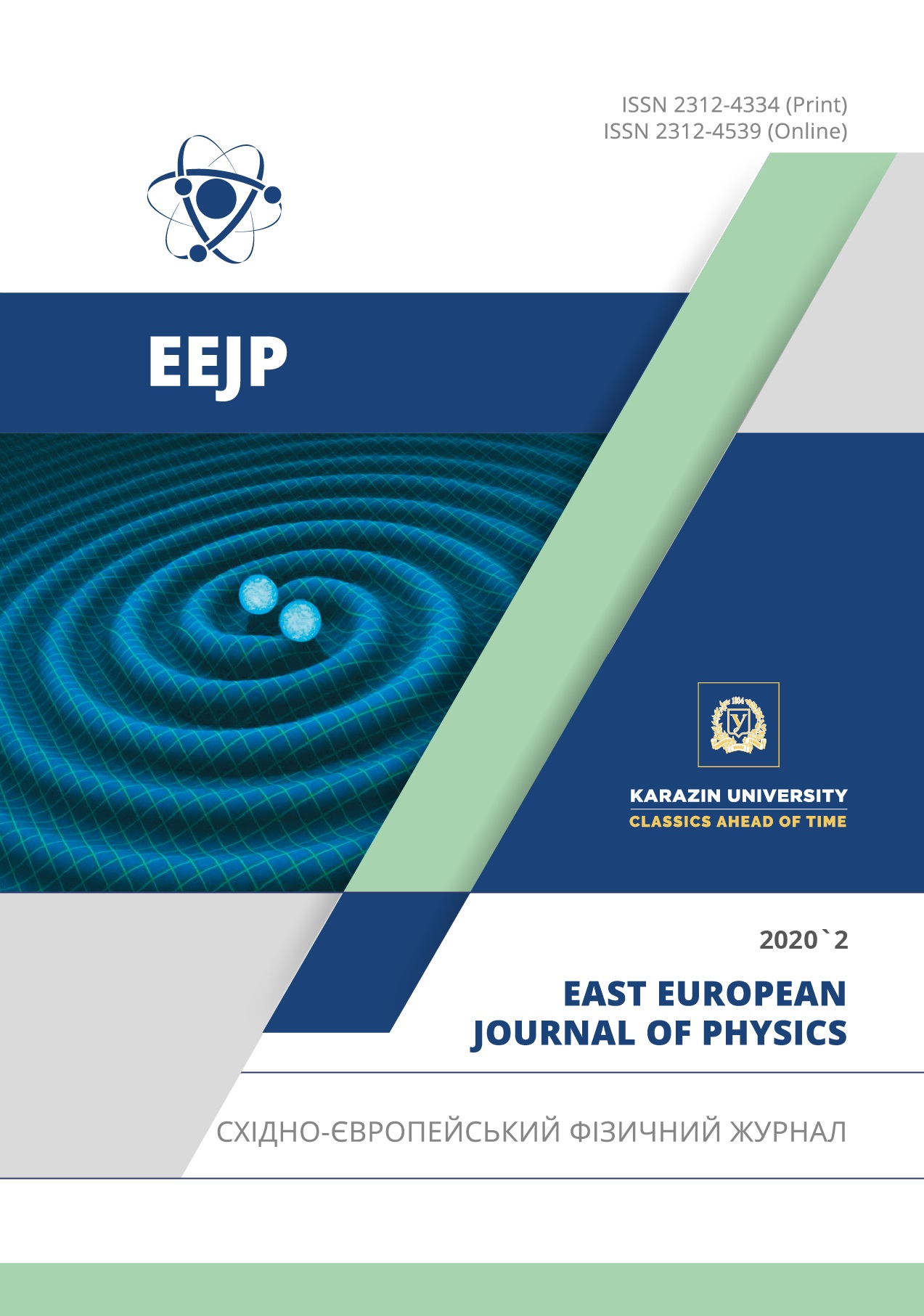Rayleigh-Plateau Dissipative Instability
Abstract
The instability of a freely falling jet of liquid in air taking into account the viscosity of the contacting media is considered. In neglecting the viscosities of both media, instability was studied by Rayleigh and Plateau. They showed that instability develops as a result of the action of surface forces, and is expressed in a change in the cylindrical shape of the boundary of a freely falling jet of liquid with air into a sequence of spherical drops. In subsequent works, by phenomenological consideration of viscosity by means of the Ohnesorge number, it is shown that the viscosity of each of the contacting media affects the nature of the instability. However, this method of taking viscosity into account is not entirely correct, because does not take into account the specificity of the boundary conditions existing at the interface. It is proposed to use percolation boundary conditions, the validity of which is proved by the example of the exact determination of the threshold velocity of occurrence of Kelvin-Helmholtz instability. A dispersion equation of the Rayleigh-Plateau problem with percolation boundary conditions that describes the instability taking into account the viscosity of both media is obtained. The dissipative nature of the development of such instabilities is substantiated. The growth rates of instabilities are determined in cases when: the jet and medium have a low viscosity (ideal fluids); the jet is characterized by high viscosity, and the environment is small; the jet and the environment are highly viscous. It is shown that the theoretical model of droplet decay of the jet in the absence of viscosity of both media is quite good, in quantitative terms, consistent with experimental results. The maximum increment is equal γmaxKGγ≈0.32, against the Rayleigh-Plateau increment γmaxKGγ≈0.34, for disturbances with the same wave number XMAX≈0.37. It was also shown that for viscous jets and a weakly viscous environment, the instability increment describes the experimental results with a rather high degree of accuracy. Numerical calculations show that for jets of comparable viscosity, the instability increment decreases with increasing viscosity of the environment. If the viscosity of the environment is constant, then the increment of instability will be greater where the viscosity of the stream is higher. It is shown that the results of theoretical calculations are in good agreement with the available experimental data.
Downloads
References
J. Plateau, Experimental and Theoretical Statics of Liquids Subject to Molecular Forces Only, (Memoires of the Academy of Belgium, 1873).
Lord Rayleigh F.R.S., Proc. Lond. Math. Soc. 1-10(1), 4 (1878), https://doi.org/10.1112/plms/s1-10.1.4.
J.W. Strutt (Lord Rayleigh), Phil. Mag. 34(5), 177 (1892), https://doi.org/10.1080/14786449208620301.
S.K. Aslanov, Technical Physics. The Russian Journal of Applied Physics. 44, 1386 (1999).
J. Eggers, E. Villermaux, Rep. Prog. Phys. 71, 1 (2008), http://dx.doi.org/10.1088/0034-4885/71/3/036601.
S.O. Shiryaeva, and A.I. Grigoriev, Электронная библиотека материалов [Electronic Library of Materials], 50(5), 24 (2014).
W.V. Ohnesorge, Z. Angew. Math. Mech. 16, 355 (1936), https://doi.org/10.1002/zamm.19360160611.
H. Helmholtz, Annalen der Physik, 277, 641 (1890), https://doi.org/10.1002/andp.18902771202.
W. Thomson (Lord Kelvin), Phil. Mag. 42, 362 (1871), https://doi.org/10.1080/14786447108640585.
S. Chandrasekhar, Hydrodynamic and Hydromagnetic Stability (Dover publications Inc., New York, 1981).
V.I. Tkachenko, The Journal of Kharkiv National University, physical series “Nuclei, Particles, Fields”, 916, 70-74 (2011), http://dspace.univer.kharkov.ua/handle/123456789/4736. (in Russian)
M. van Dike, Альбом течений жидкости и газа [Album of fluid and gas flows], (Mir, Moscow, 1986). (in Russian)
D.S. Kuznetsov, Специальные функции, [Special functions], (Vysshaya shkola, Moscow, 1962). (in Russian)
I.K. Kikoin, (Ed.), Таблицы физических величин. Справочник [Tables of physical quantities. Reference book.], (Atomizdat, Moscow, 1976). (in Russian)
Copyright (c) 2020 Oksana L. Andreeva, Leonid A. Bulavin, Viktor I. Tkachenko

This work is licensed under a Creative Commons Attribution 4.0 International License.
Authors who publish with this journal agree to the following terms:
- Authors retain copyright and grant the journal right of first publication with the work simultaneously licensed under a Creative Commons Attribution License that allows others to share the work with an acknowledgment of the work's authorship and initial publication in this journal.
- Authors are able to enter into separate, additional contractual arrangements for the non-exclusive distribution of the journal's published version of the work (e.g., post it to an institutional repository or publish it in a book), with an acknowledgment of its initial publication in this journal.
- Authors are permitted and encouraged to post their work online (e.g., in institutional repositories or on their website) prior to and during the submission process, as it can lead to productive exchanges, as well as earlier and greater citation of published work (See The Effect of Open Access).








